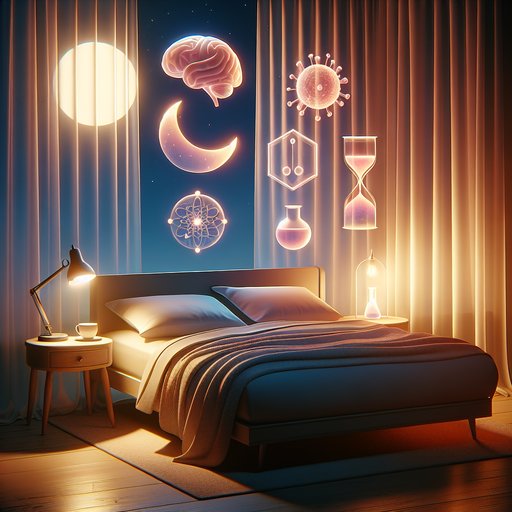
Sleep is not lost time; it is active biology that tunes the brain, coordinates the immune system, and stabilizes the body’s aging machinery. In a world of glowing screens, late-night emails, and round-the-clock shifts, many people sleep less and feel it in their focus, mood, and health. The science of sleep now maps specific phases of the night to distinct benefits, revealing how deep sleep and REM team up to protect memory, resilience, and longevity. That knowledge also brings practical takeaways: light at the right time, consistent rhythms, smart caffeine and alcohol timing, and a simple wind-down routine can all add up. While these strategies support general wellness, everyone’s situation is unique, and a healthcare professional can help tailor sleep habits to individual needs.
Poor sleep has quietly become a modern risk factor, nudging attention, mood, immunity, and metabolism in the wrong direction. Work that crosses time zones, social schedules that tug us past bedtime, and devices that brighten evenings make it easy to drift off course. The result is fewer nights of consolidated sleep and more mornings that feel unrefreshed, compounding stress and reducing motivation to exercise or cook well. Because sleep interacts with nearly every system, improving it is a high-leverage way to support overall health without adding more to-do lists.
Memory depends on sleep’s nightly choreography. During slow-wave sleep, the hippocampus “replays” new experiences while thalamo-cortical sleep spindles help cement facts and vocabulary into more durable neocortical storage. REM sleep then links ideas, integrates motor skills, and downshifts the emotional charge tied to difficult memories, supporting insight and steadier mood. You can observe this in everyday life: studying, sleeping, and then testing usually beats cramming through the night.
Even short naps that include spindles can bolster learning, showing that quality, not just quantity, matters. The immune system also keeps a night shift. Sleep promotes the release and timing of cytokines that coordinate innate and adaptive defenses, and partial sleep loss can dampen natural killer cell activity. People who sleep well after vaccination tend to develop stronger antibody responses, a pattern replicated across multiple vaccine types.
Chronic short sleep is associated with higher markers of systemic inflammation, such as C-reactive protein and interleukin-6, which may help explain links to cardiometabolic risk. By restoring regular, sufficient sleep, the body is better positioned to respond to infections and maintain balanced inflammation. Sleep shapes the trajectory of healthy aging in subtle but meaningful ways. Deep sleep appears to support the brain’s glymphatic clearance of metabolic byproducts; animal studies and human imaging suggest this process is most active at night.
Epidemiologic studies associate chronically short or disrupted sleep with a higher risk of cognitive decline, though causation is complex and multiple factors contribute. Sleep also dovetails with longevity markers, with some cohorts showing associations between adequate sleep and longer telomeres, alongside better glucose control and blood pressure patterns. Aging changes sleep architecture and timing, but protecting regular rhythms helps preserve daytime functioning and quality of life. Circadian timing is the scaffolding that holds sleep together, and light is its master signal.
Bright natural light soon after waking anchors the internal clock, helping melatonin rise earlier that night and making sleep onset smoother. In the evening, dimming household lights and limiting bright screen exposure reduces circadian delay so the brain’s sleepy signals can emerge on time. Temperature and darkness reinforce the message: a cool, quiet, and dark bedroom helps the brain drop core temperature and maintain deeper stages of sleep. When schedules drift on weekends, social jet lag can follow; keeping a steady wake time protects the rhythm even when bedtime shifts slightly.
Daily choices make measurable differences by night. Caffeine’s long half-life means late-afternoon cups can linger, so many people benefit from a personal cutoff in the early afternoon. Alcohol can appear to speed sleep onset but fragments sleep and suppresses REM later, making nights feel light and mornings groggy; lighter, earlier drinks lessen the impact. Regular daytime activity, especially outdoors, deepens sleep pressure and stabilizes the clock, whereas high-intensity workouts right before bed can be too activating for some.
A wind-down routine—lower lights, write a brief to-do or worry list, read something calming, and use slow breathing or progressive muscle relaxation—teaches the brain that the day is closing and helps shorten sleep latency. If wakefulness stretches on, getting out of bed for a low-light, quiet activity until sleepiness returns protects the bed-sleep association. Translating science into a personal plan works best with small, consistent steps. Pick a sustainable wake time for all seven days, add morning light, and adjust bedtime in 15–30-minute increments until sleep feels sufficient.
Taper caffeine earlier, leave a two-to-three-hour buffer after your last drink or heavy meal, and cool the bedroom. Short early-afternoon naps can restore alertness without disrupting night sleep; setting a gentle alarm around 10–20 minutes helps avoid sleep inertia. Track how you feel more than what a device reports, since numbers can fluctuate and sometimes create unnecessary worry; trends over weeks matter more than single nights. If sleep remains difficult, or if snoring, pauses in breathing, unusual movements, or persistent daytime sleepiness occur, a healthcare professional can evaluate what’s going on.
Clinicians may screen for conditions like sleep apnea or restless legs, review medications and timing, and offer evidence-based behavioral strategies for insomnia. Shift workers, new parents, and caregivers often face unique constraints; targeted guidance can prioritize the most impactful changes within real-world limits. It’s appropriate to seek personalized advice early rather than waiting for sleep problems to accumulate. Collaborative plans tend to outperform self-experimentation alone.
Taken together, the science paints sleep as an active, restorative state that binds memory, fortifies immunity, and supports healthy aging. Aligning light, timing, environment, and habits gives biology a reliable nightly window to do its work. The payoff rarely comes from perfection but from steady patterns that are repeated enough to become automatic. Small upgrades compound into better days and clearer minds.
For individualized recommendations—especially when symptoms persist—consult a qualified healthcare professional who can tailor strategies to your goals and circumstances.







































